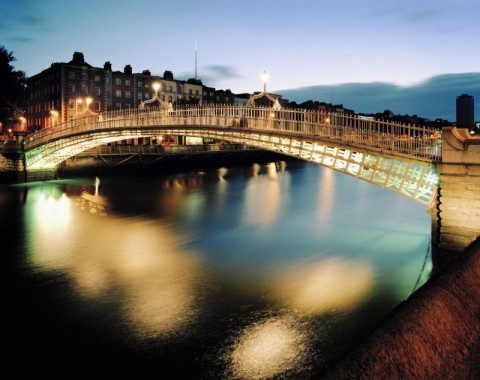Have you ever wondered why we celebrate St. Patrick’s Day? This magical holiday of shamrocks and soda bread has been observed as a religious holiday for over a thousand years. Infinity Insurance Agency, Inc. (IIA) is excited to dive into the fascinating history behind this festive celebration.
St. Patrick the Saint

Initially designated as a day to honor St. Patrick’s death on March 17th in the fifth century, this occasion was usually marked by a morning church service followed by celebrations. St. Patrick may be the patron saint of Ireland, but this national apostle was born in Roman Britain and brought back to Ireland as a slave at 16 years old. While there are many myths and legends surrounding the life of St. Patrick, the most popular include his banishment of the snakes from Ireland and the explanation of the Holy Trinity using the leaves of the Shamrock.
In 1762, the first St. Patrick’s Day parade was held in New York City. What was once a Catholic feast day transformed into a holiday marked by parades, music and festivities.
How St. Patrick’s Day became a global celebration

Today, St. Patrick’s Day parades are a well-witnessed phenomenon. But how did this green machine come to be? By the early 1800s, Irish patriotism in America was flourishing, and many Emerald Isle immigrants joined local Irish Aid societies such as the Friendly Sons of Saint Patrick and the Hibernian Society. These societies would often meet and celebrate their heritage with parades, music, and bagpipes. Eventually, these groups would begin hosting the St Patrick’s Day parade and sponsor the event, which was previously hosted by military organizations. St. Patrick’s Day parades would eventually pop up in cities all over the U.S. allowing Irish Americans to show off their homeland pride.
Traditionally, St. Patrick’s Day revelers would wear green and chow down on Irish delicacies such as soda bread, corned beef and cabbage, and champ. Today, the luck of the Irish has spread far and wide, and celebrations and parades can be found everywhere from Mexico to New Zealand.
The surprising connection between Mexico and St. Patrick’s Day

St. Patrick’s Day in Mexico carries a special significance. According to Time Magazine, Mexico uses this day to commemorate the valor of the San Patricios. Known as the ‘martyrs’ of the St. Patrick’s Battalion, this group of mostly Irish natives defected from the U.S. Army to fight for Mexico during the Mexican American War (1846-1848). They are mostly remembered for their bravery during the bloody Battle of Churubusco, which took place outside of Mexico City, After the Americans won the war, many of the Irish defectors were captured and hung. Today Mexico remembers these fallen soldiers as heroes with a plaque at San Jacinto Plaza in Mexico City, as well as an annual tribute on September 12th, the day of their hanging, other celebrations are also held at famous battle sites, or on St. Patrick’s Day.
How St. Patrick’s Day is celebrated in Mexico
On March 17th, Mexico takes time to pay tribute to the San Patricios once again with various cultural events and celebrations. Tourists and locals alike can participate in ceremonies at the Irish Embassy in Mexico City or at the Ex-Convento de Churubusco. There is even a St. Patrick’s Day parade complete with Celtic music in Coyoacán. Those looking to spread some leprechaun cheer can head to any Irish bar in Mexico City or Guadalajara to enjoy live music, decorations, Guinness, and festive food.
Similarities between Irish and Mexican cultures
In addition to a deep-rooted Catholic faith and a history of immigration to the U.S., Mexican and Irish cultures also share several similarities including:
- Shared values: Both Mexican and Irish cultures place a strong emphasis on family, faith and community.
- Love of music and dance: Both cultures celebrate through traditional folk music and dance in the form of Irish step dancing, Mexican Mariachi, and bagpipes.
- Traditional foods: Both Mexican and Irish cultures celebrate with hearty fare such as cottage pie, corned beef and cabbage, tamales, mole, and tacos.
Every March 17th, people all over the world come together to celebrate their Irish pride. What was once just a day of religion has come to represent a unique time to reflect on Irish traditions. Beyond green beer and bagpipes, St. Patrick’s Day is the perfect opportunity to explore the fascinating history of the San Patricios or attend an exciting tribute to these fallen war heroes of Mexico.
Infinity Insurance Agency Inc. loves learning about the rich history of the communities that our customers call home.
In addition to community outreach, IIA is available to help you discover the best auto coverage for your needs. To speak to one of our Spanish-bilingual team members and receive a free quote call: 1-855-478-3705 today!
